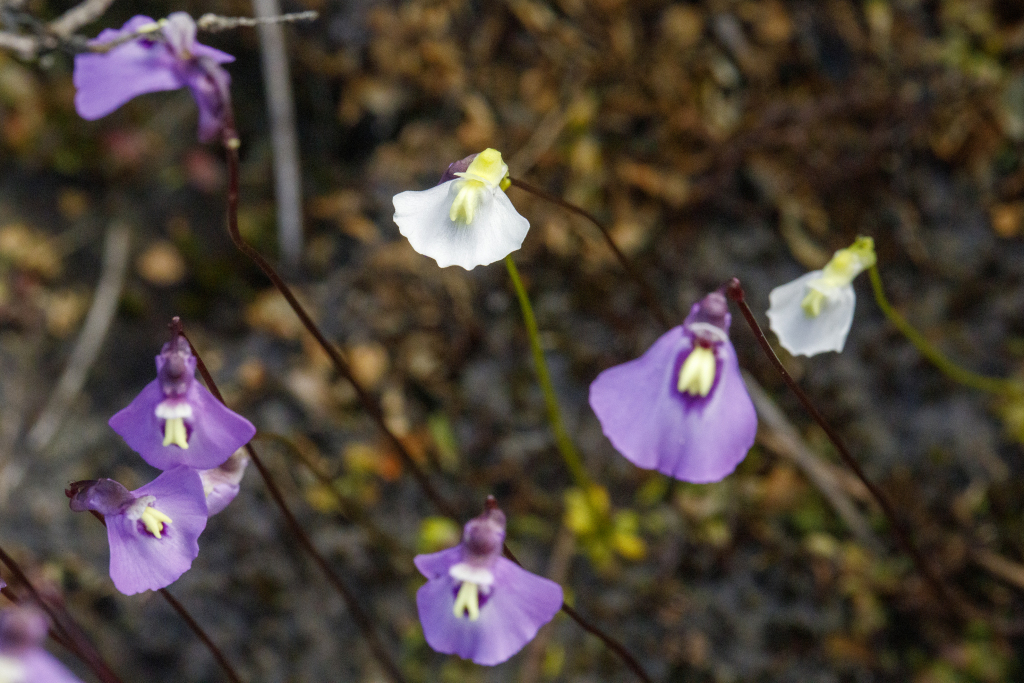Utricularia grampiana
R.W.JobsonTerrestrial annual or perennial; stolons present. Leaves rosetted and on stolons, obovate to ovate or spathulate, 1.5–6 mm long and to c. 1.5 mm wide. Traps numerous on stolons, globose or ovoid, c. 1–2 mm long. Racemes 1-several, erect, 6–19 cm long, flowers solitary or paired, rarely a third flower above the pair; sterile bracts absent; fertile bracts attached about one-third their length from the base, oblong to ovate, c. 2 mm long; bracteoles similar to bracts; calyx-lobes subequal, upper lobe circular to broad-ovate, c. 2.5 mm long, truncate; lower lobe ovate, with emarginate apex. Corolla 4–10 mm long, light mauve; upper lip obovate, obtuse or truncate, usually flecked darker mauve; lower lip much larger, semi-circular or depressed-elliptic, with 2 strongly raised yellow ridges, each hooked near the apex, extending apically beyond the purple ridge on either side; palate pubescent; spur cylindric, shorter than lower lip, curved forward from about midway, apex rounded. Capsule globose, c. 4 mm diam.; seeds obovoid, c. 0.25 mm long. Flowers Oct.–Jan.
GGr. Known mainly from mossy seeps on sandstone between 400 and 1100 m altitude in the Mt Difficult and Mt William ranges in the Grampians and on granite at nearby Langi Ghiran.
In the absence of fresh, flowering specimens, the distinction between this species, Utricularia barkeri and U. dichotoma sens. str. can be difficult to discern.
 Spinning
Spinning